The Craftsmanship Behind the Camera: Inside a Professional Video Production Crew

As the curtain opens, the spotlight shines bright, illuminating the unsung heroes behind the camera.
You’re about to step into the world of professional video production, where the real magic happens.
Behind every enthralling scene, there’s a team of skilled artisans working in harmony to bring the director’s vision to life.
From the cinematographer’s precision to the sound engineer’s crucial ear, each crew member plays an essential role in crafting an immersive experience.
But what goes into creating this cinematic magic?
You’re about to find out, as we pull back the curtain to reveal the intricate process that unfolds behind the lens.
Table of Contents
The Director’s Creative Vision
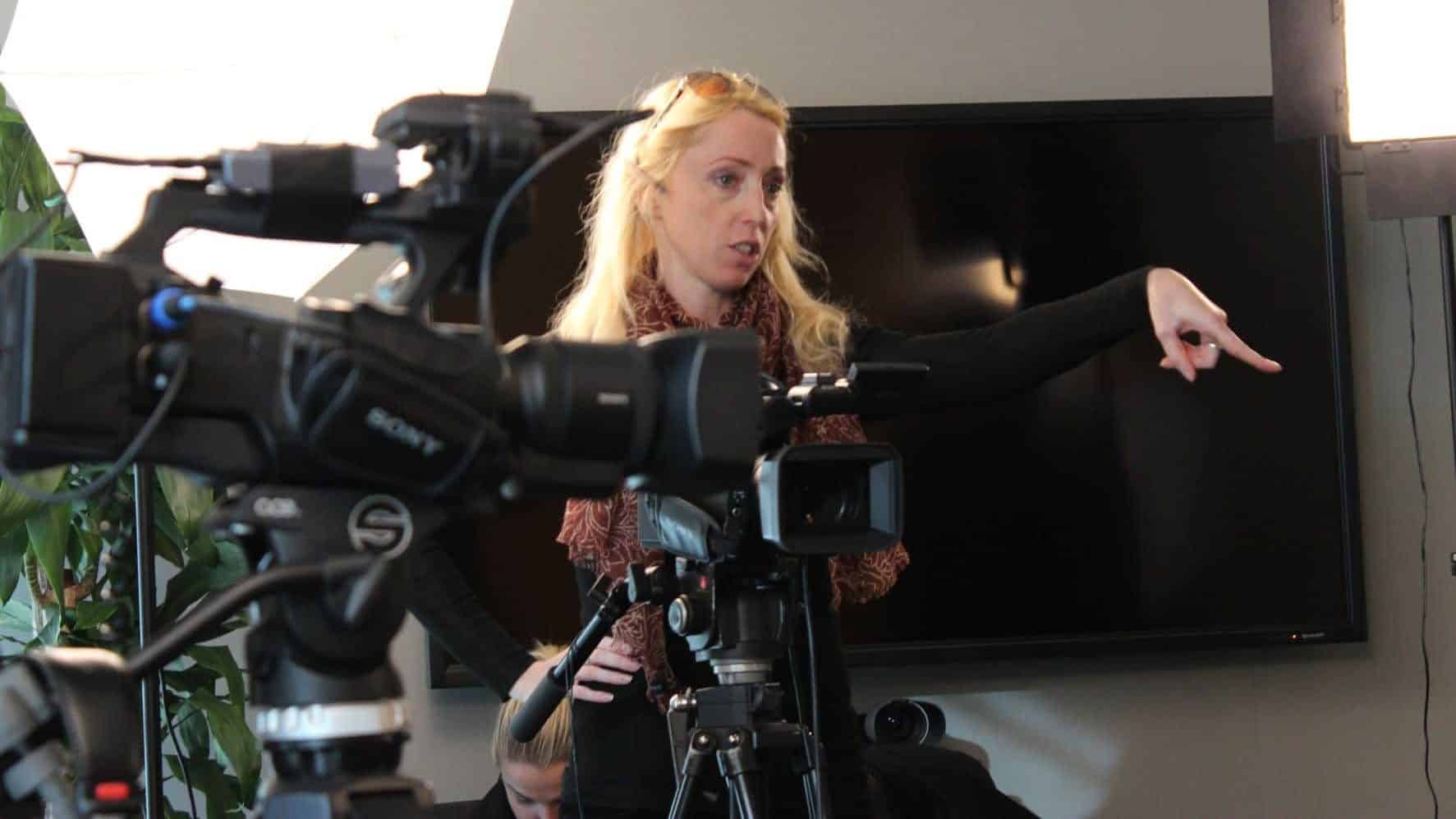
As you explore the world of filmmaking, you’ll discover that the director’s creative vision is the cornerstone of a movie’s narrative, shaping every aspect of the storytelling process.
This vision is the foundation upon which the entire production is built, influencing every creative decision made throughout the project.
The director’s artistic expression is the driving force behind the film’s tone, pace, and overall aesthetic.
With creative freedom to experiment and innovate, the director brings their unique perspective to the script, infusing the story with their own emotional resonance.
As you investigate further into the director’s role, you’ll find that their creative vision isn’t only a product of their artistic expression but also a reflection of their technical expertise.
The director’s ability to balance artistic expression with technical precision is vital in bringing the narrative to life.
Crafting the Visual Storyboard
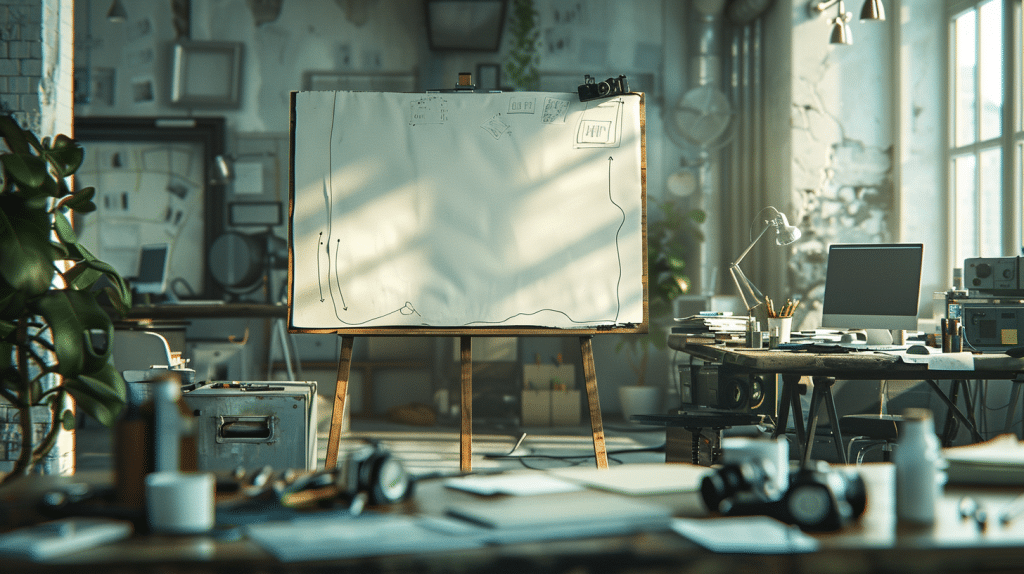
As you craft the visual storyboard, you’re fundamentally constructing a visual blueprint that translates the script into a series of shots.
You’ll need to carefully consider the framing of each scene, taking into account the narrative’s pacing, tone, and emotional resonance.
Building the Visual Blueprint
You develop a visual blueprint by meticulously crafting a storyboard, an essential step in transforming your script into a cinematic reality.
This detailed, shot-by-shot representation of your film allows you to visualize the pacing, camera placement, and overall aesthetic of your production.
A well-crafted storyboard is vital in ensuring a smooth and efficient shoot, as it enables you to identify potential issues and make necessary adjustments before cameras roll.
As you build your visual blueprint, you’ll create a series of visual flowcharts that outline the sequence of events, camera movements, and character interactions.
This process requires a deep understanding of cinematography, lighting, and composition.
You’ll need to take into account factors such as camera placement, lens selection, and shot duration to create a cohesive visual narrative.
By meticulously planning each shot, you’ll be able to bring your creative vision to life, ensuring that every frame tells a story that captivates and engages your audience.
Framing the Narrative
With a keen eye for detail, you dedicate yourself to crafting each frame to convey the narrative’s emotional resonance, carefully balancing composition, lighting, and camera placement to evoke the desired mood and atmosphere.
As you frame the narrative, you’re not just capturing images – you’re developing a visual language that speaks directly to the heart of the story.
Every shot, every angle, and every lighting choice is a deliberate decision that either reinforces or detracts from the emotional intimacy you’re aiming to create.
Visual honesty is key, as you work to create an authentic and immersive experience for the viewer. You’re not just telling a story; you’re inviting the audience to inhabit the world you’ve created.
Lighting the Scene to Perfection
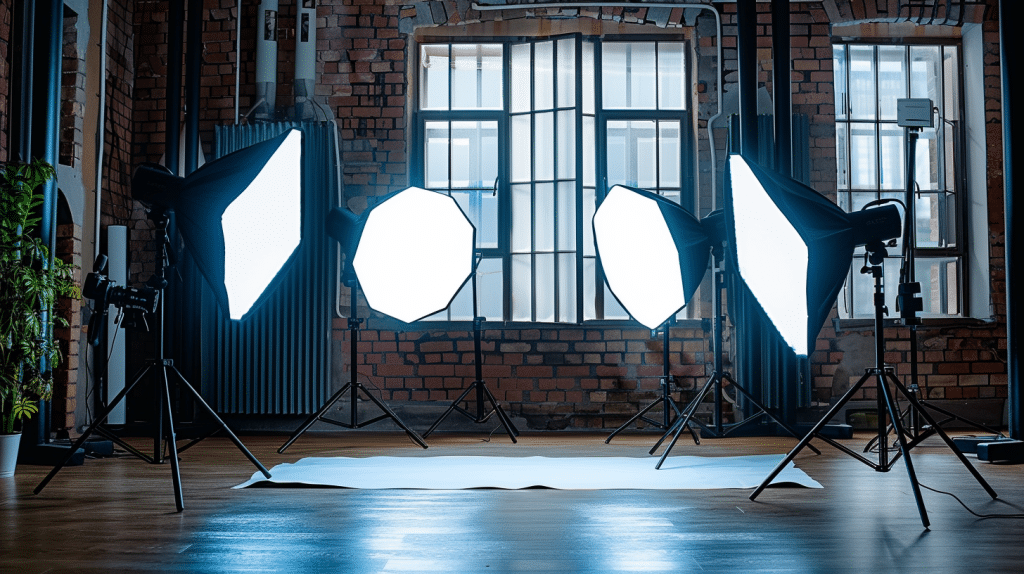
As you step into the world of lighting, you’ll need to contemplate the nuances of setting the mood, softening harsh shadows, and balancing contrast ratios to create a visually stunning scene.
By mastering these elements, you’ll be able to craft a lighting design that elevates your story and draws the viewer in.
With attention to detail and a keen eye for lighting, you’ll discover the full potential of your cinematic vision.
Setting the Mood
Crafting a scene’s ambiance relies heavily on the intentional manipulation of light, an essential element that can elevate the narrative’s emotional resonance and visual allure.
As you step onto the set, you’re tasked with creating a visual narrative that transports the audience to a specific time and place.
To achieve this, you’ll need to carefully consider the mood you want to evoke. This is where mood boards and color palettes come into play.
By creating a visual representation of the desired atmosphere, you can pinpoint the specific lighting elements that will bring your vision to life.
You’ll need to ask yourself: What emotions do I want to evoke in my audience? What time of day is it in the scene? Are there any specific lighting fixtures or natural light sources that will enhance the mood?
By answering these questions, you’ll be able to craft a lighting plan that perfectly captures the essence of your scene.
With a clear vision in mind, you can begin to select the perfect lighting tools, from softbox lights to LED panels, to bring your vision to life.
Softening Harsh Shadows
By strategically positioning diffusers, flags, and bounce cards, you can tame harsh shadows, softening the overall lighting to create a visually stunning scene that draws the audience in.
Shadow diffusion is a pivotal aspect of lighting design, as it allows you to subtly modify the light’s intensity and direction.
By placing a diffuser between the light source and your subject, you can scatter the light, reducing the contrast and creating a more even, soft illumination. This technique is particularly useful when working with strong, directional light sources, such as the sun or a key light.
Additionally, using flags to block or redirect light can help to control the spread of light, further refining the shadow areas.
Light wrapping, a technique that involves bouncing light onto the subject’s face or body, can also be used to soften harsh shadows and create a more natural, three-dimensional appearance.
Balancing Contrast Ratio
Your goal is to strike a delicate balance between highlights and shadows, ensuring that the contrast ratio in your scene is optimized to draw the audience’s attention to the subject, while maintaining a visually appealing atmosphere.
When balancing contrast ratio, you’re working within the dynamic range of your camera, which is the difference between the brightest and darkest areas of the image.
If your contrast ratio is too high, you risk losing detail in either the highlights or shadows. To avoid this, you need to expose your scene in a way that captures the full range of tones, from pure black to pure white.
Revealing secrets to achieving a perfect balance lie in understanding how to control light.
By using a combination of key lights, fill lights, and backlight, you can create a harmonious contrast ratio that guides the viewer’s eye to the subject. Pay attention to the ratio of key light to fill light, as this will greatly impact the overall contrast.
Sound Engineers at Work
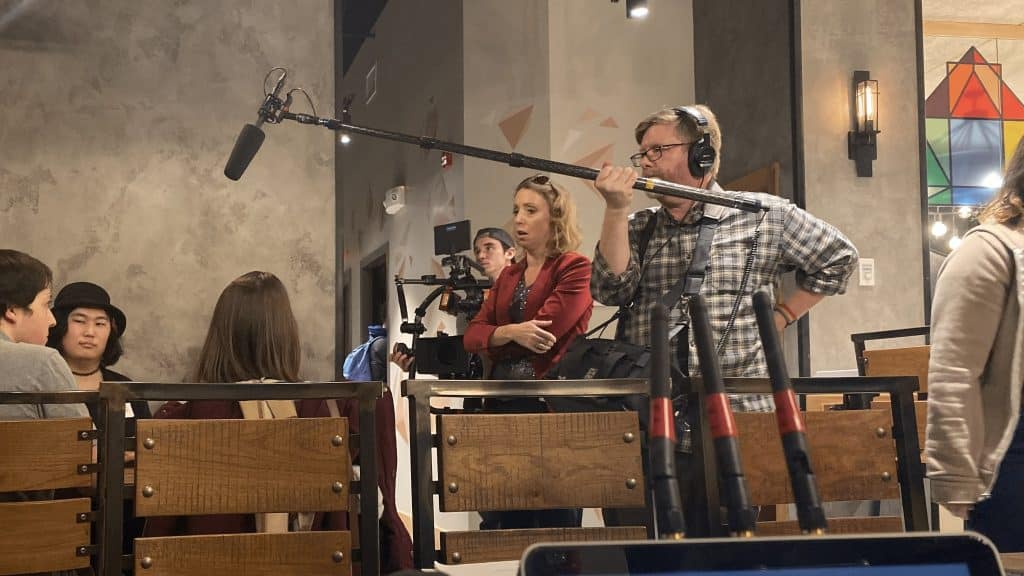
As you step onto the film set, the sound engineer’s meticulous attention to detail becomes apparent in the carefully arranged microphones, each strategically positioned to capture the subtlest nuances of sound.
You notice the engineer’s focus on eliminating audio feedback, ensuring that every whisper, rustle, and movement is translated into a rich, immersive audio experience.
The sound engineer’s craft is a delicate balancing act, requiring patience, precision, and creativity. Here’s a glimpse into their process:
- Pre-production planning: The engineer carefully selects microphones and positioning to suit the scene, considering factors like room acoustics, talent movement, and camera placement.
- Sound checks: Before filming, the engineer conducts thorough sound checks to identify and address any issues, ensuring a seamless recording experience.
- Real-time monitoring: During filming, the engineer continuously monitors audio levels, making adjustments on the fly to capture the perfect take.
Through their meticulous attention to detail, the sound engineer brings the production to life, transporting the audience into the world of the film.
Behind the Lens With Cinematographers
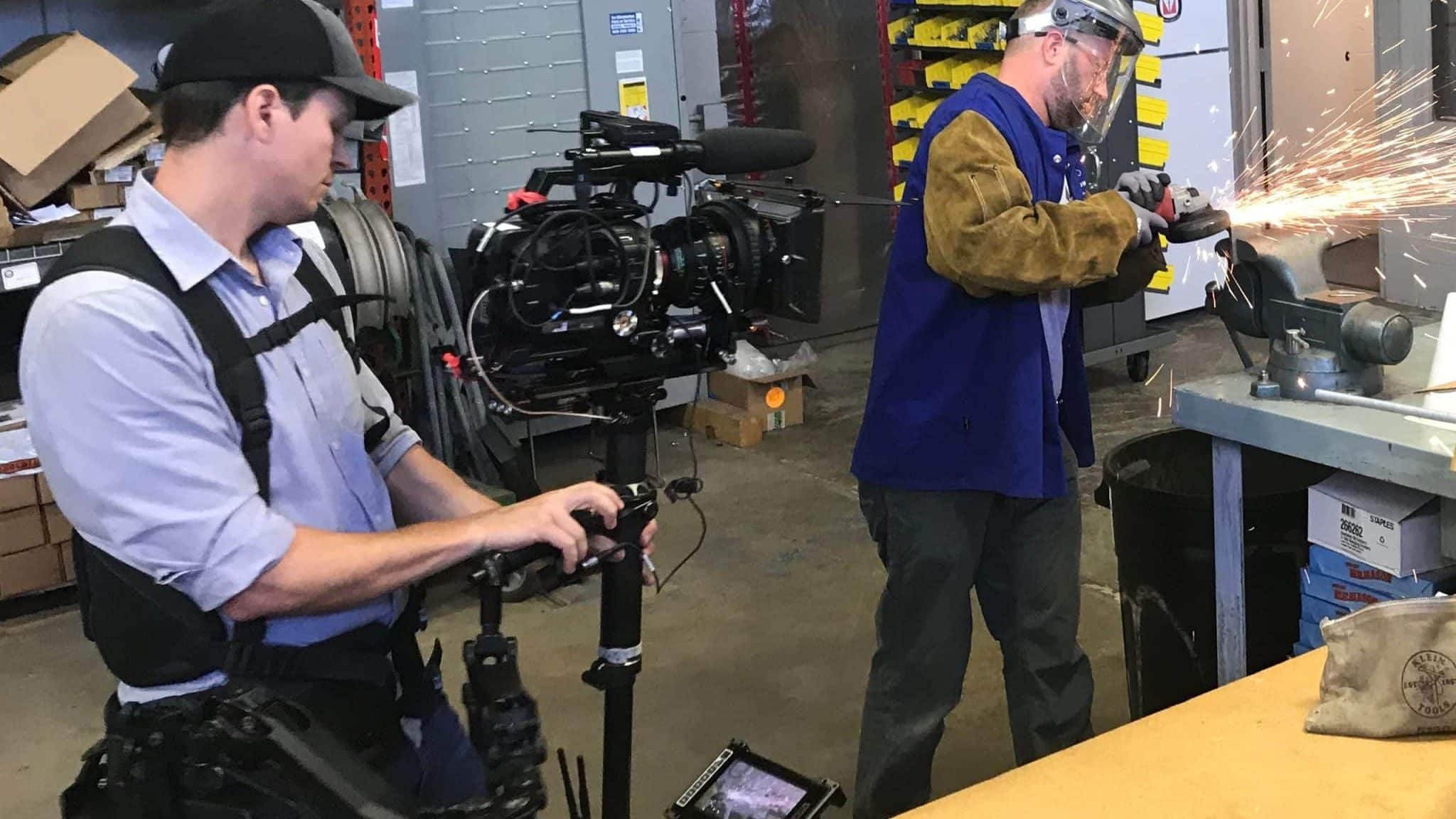
Framing each shot with precision, cinematographers meticulously balance light, composition, and movement to evoke the desired emotional response from the audience.
As you step behind the lens, you’re not just capturing a scene – you’re crafting a visual narrative.
You’re acutely aware of camera etiquette, ensuring that every shot is aesthetically pleasing and technically sound.
You’re a master of focus tricks, using selective focus to guide the viewer’s attention and create a sense of intimacy or tension.
You meticulously adjust the aperture, shutter speed, and ISO to achieve the perfect exposure. You’re attuned to the subtle interplay of light and shadow, using it to evoke mood and atmosphere.
Your composition is deliberate, using the rule of thirds, leading lines, and framing elements to create visually striking images.
As you work, you’re constantly considering the story’s emotional arc, using your technical expertise to amplify the emotional impact of each scene.
With every shot, you’re not just capturing a moment – you’re creating a work of art.
Editing Magic: Weaving It Together
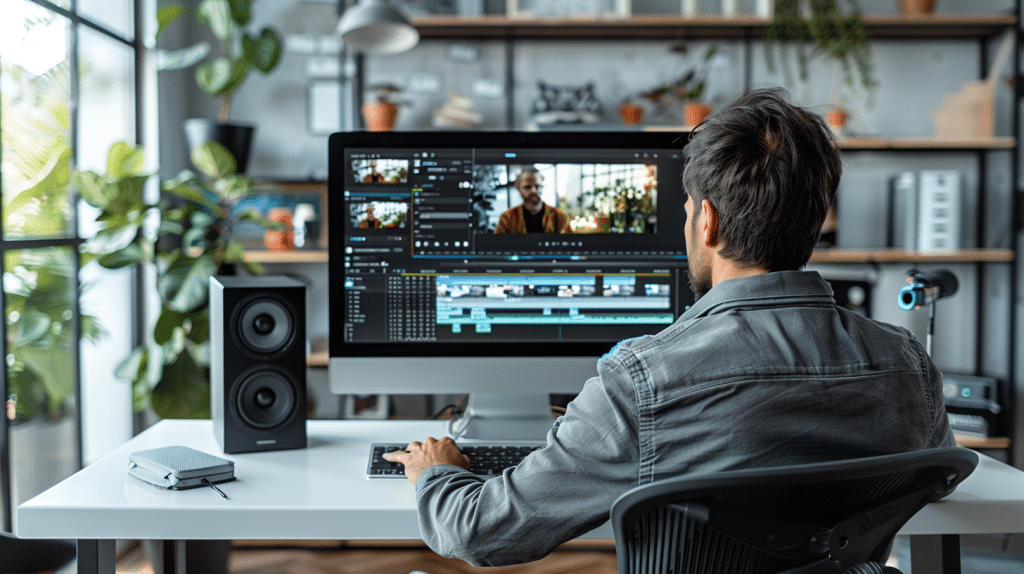
With every clip meticulously trimmed and arranged, you’re about to weave a narrative tapestry that will transport audiences to new emotional heights.
As an editor, you’re not just assembling footage – you’re crafting a cinematic experience. Your precision and creativity will breathe life into the story, making every frame count.
To master the art of editing, you’ll employ a range of techniques to keep your audience engaged. Here are a few essentials to get you started:
- Timeline Tricks: Learn to manipulate time to create tension, suspense, or drama. Jump cuts, flashbacks, and montages are just a few tools to experiment with.
- Pacing Strategies: Balance fast-paced action with slow-burning introspection to keep your audience on the edge of their seats.
- Rhythmic Editing: Use the rhythm of your cuts to create a sense of energy, from frenetic to languid, to match the mood of your scene.
Frequently Asked Questions
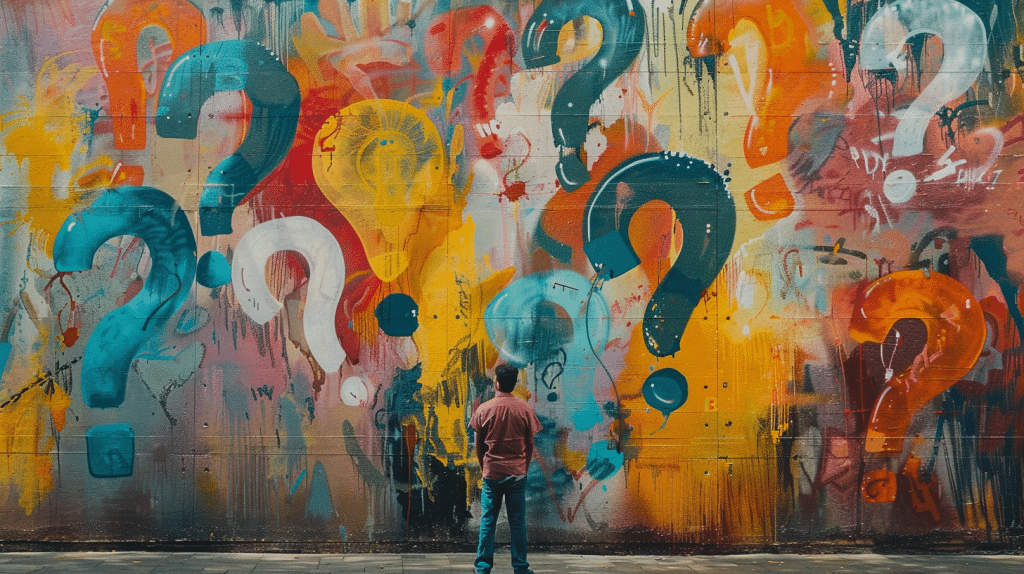
How Do Video Production Crews Handle Last-Minute Script Changes?
When last-minute script changes arise, you adapt swiftly to guarantee the director’s vision remains intact.
You swiftly review script revisions, analyzing how they impact the production’s overall flow.
By communicating effectively with the team, you adjust shot lists, scheduling, and logistics to accommodate the changes.
With meticulous attention to detail, you ensure a seamless integration of the revised script, preserving the artistic integrity of the project.
What Safety Protocols Are in Place for High-Risk Stunts and Scenes?
Are you prepared to witness the meticulous planning that unfolds behind the scenes of high-stakes productions?
When it comes to high-risk stunts and scenes, you’ll be relieved to know that safety protocols are paramount.
Before filming, stunt permits are secured, and thorough risk assessments are conducted.
The crew holds safety briefings, equipment checks are rigorous, and on-set medics are always at the ready.
This attention to detail guarantees that the show goes on, without compromising the well-being of the cast and crew.
Can Anyone Be a Production Assistant, or Are Skills Required?
As you consider a role as a production assistant, remember it’s not just about fetching coffee. You’ll need skills and a solid understanding of set etiquette to thrive in this fast-paced environment.
Strong team dynamics are essential, and you’ll need to be able to take direction, multitask, and problem-solve on the fly.
It’s a demanding role that requires attention to detail, physical stamina, and excellent communication skills. Can you keep up?
How Do Crews Deal With Difficult or Uncooperative Talent on Set?
You’re on set, surrounded by cameras, lights, and crew members, when suddenly, your talent starts throwing a tantrum. As a production assistant, it’s your job to handle the situation.
You employ talent wrangling skills, staying calm and composed, to diffuse the tension. With conflict resolution techniques, you listen actively and empathetically, finding a solution that works for everyone.
What Happens to Leftover Food and Catering After a Shoot Wraps?
As you wrap up the shoot, you might wonder what happens to the leftover food and catering. Well, you’ll be glad to know that many production teams prioritize reducing food waste.
Crews often host impromptu feasts, devouring the remaining goodies before they go to waste. It’s not uncommon to see a crew feast erupt in the parking lot, with everyone digging in and savoring the spoils of their hard work.
Share:
Search our blog:
Follow us on:
